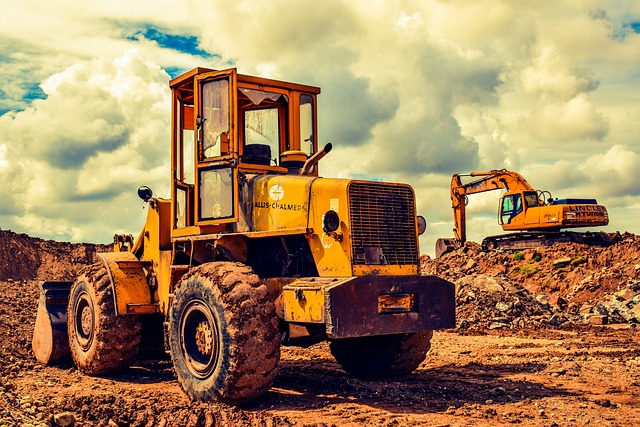Mini Crawler Tractor: Compact Power for Construction and Landscaping in 2025
The mini crawler tractor brings tracked stability, low ground pressure, and surprising payload to tight jobsites where wheeled machines struggle. In 2025, these compact units combine efficient diesel engines, hydrostatic drivetrains, and nimble frames that slip through gates and narrow alleys while hauling spoil, tools, and materials. Contractors, landscapers, and property owners use them to shuttle loads over mud, turf, and slopes without tearing up the ground or getting stuck. This guide explains what a mini crawler is and how it may help you with your garden work

Mini crawler tractors represent a significant advancement in compact construction and landscaping equipment. Their tracked design distributes weight evenly across the ground surface, reducing soil compaction and enabling operation on slopes, muddy terrain, and unstable surfaces where wheeled equipment would struggle. The combination of small footprint and substantial power output makes these machines valuable assets for contractors, landscapers, and property owners managing challenging terrain.
What Is a Mini Crawler Tractor?
A mini crawler tractor is a compact, tracked vehicle designed for versatility across multiple applications. Unlike traditional tractors with wheels, these machines use continuous tracks similar to bulldozers, providing superior traction and weight distribution. Typical models measure between 3 to 5 feet in width and weigh 1,500 to 4,000 pounds, allowing them to navigate narrow gates, pathways, and confined work areas. The tracked undercarriage enables operation on slopes up to 30 degrees, making them suitable for hillside work that would be unsafe for wheeled equipment. Most mini crawler tractors feature quick-attach systems compatible with dozens of implements, transforming a single machine into a multi-purpose tool for excavation, grading, hauling, and material handling.
Key Features and Specifications
Modern mini crawler tractors incorporate several essential features that enhance performance and operator experience. Engine power typically ranges from 15 to 35 horsepower, with diesel engines being most common due to their fuel efficiency and torque characteristics. Hydraulic systems deliver 10 to 20 gallons per minute of flow, powering attachments such as augers, trenchers, and hydraulic breakers. Operating weight varies by model, with lighter units around 1,500 pounds suited for delicate turf work and heavier models exceeding 3,500 pounds providing greater stability for demanding tasks. Ground pressure measurements between 3 and 6 PSI allow operation on sensitive surfaces without excessive damage. Track width options range from 36 to 60 inches, with narrower configurations accessing restricted areas and wider tracks improving stability on slopes. Control systems have evolved from mechanical levers to ergonomic joystick controls, reducing operator fatigue during extended use. Many 2025 models include operator presence systems, roll-over protective structures, and enhanced visibility designs that improve safety standards.
Benefits of Using a Mini Crawler Tractor
The advantages of mini crawler tractors extend beyond their compact size. Their low ground pressure preserves existing landscapes, making them ideal for working on established lawns, golf courses, and parks where minimizing turf damage is essential. The tracked design provides exceptional stability on uneven terrain, allowing operators to work safely on slopes and embankments that would be hazardous for wheeled equipment. Versatility ranks among the most significant benefits, as a single machine can replace multiple specialized tools through quick-change attachment systems. This adaptability reduces equipment investment costs and transportation logistics for contractors managing diverse projects. The compact dimensions enable access through standard residential gates and doorways, expanding the range of accessible job sites. Fuel efficiency improvements in 2025 models reduce operating costs compared to larger machinery, while lower initial purchase prices make these machines accessible to small businesses and independent operators. Maintenance requirements are generally straightforward, with many components easily accessible for routine service.
Popular Configurations in 2025
Manufacturers offer various configurations to meet specific industry needs and operator preferences. Standard models feature open operator stations with foldable roll bars, suitable for mild weather conditions and maximum visibility. Enclosed cab versions provide climate control and protection from elements, increasing operator comfort during extended work periods and harsh weather. Some manufacturers offer hybrid power systems combining diesel engines with electric motors, reducing fuel consumption and emissions while maintaining performance. Track options include rubber tracks for finished surfaces and steel tracks for aggressive traction in rocky or abrasive conditions. Attachment packages vary widely, with basic kits including buckets and forks, while professional packages may incorporate grading blades, stump grinders, and specialized implements. Remote control systems have emerged as innovative options, allowing operators to work the machine from safe distances during hazardous tasks such as demolition or slope work. Telematics integration in premium models provides real-time performance monitoring, maintenance alerts, and location tracking for fleet management.
| Configuration Type | Typical Specifications | Cost Estimation |
|---|---|---|
| Basic Open Station | 20-25 HP, rubber tracks, standard bucket | $25,000 - $35,000 |
| Enclosed Cab Model | 25-30 HP, climate control, premium controls | $40,000 - $55,000 |
| High-Performance Unit | 30-35 HP, steel tracks, advanced hydraulics | $50,000 - $70,000 |
| Attachment Package | Bucket, forks, auger, grading blade | $5,000 - $15,000 |
Prices, rates, or cost estimates mentioned in this article are based on the latest available information but may change over time. Independent research is advised before making financial decisions.
Common Applications
Mini crawler tractors serve numerous industries and project types throughout the construction and landscaping sectors. In residential landscaping, these machines excel at grading yards, installing retaining walls, and creating drainage systems in areas inaccessible to larger equipment. Construction contractors utilize them for foundation excavation, utility trenching, and site preparation in urban environments where space constraints limit equipment options. Agricultural operations employ mini crawler tractors for orchard maintenance, vineyard work, and greenhouse construction where maneuverability and low ground pressure are essential. Municipalities and park services rely on these machines for trail maintenance, erosion control projects, and facility upgrades in recreational areas. Demolition contractors appreciate their ability to access interior spaces through standard doorways for selective demolition work. Golf course maintenance teams use them for bunker renovation, drainage improvements, and cart path construction without disrupting play on adjacent holes. Property management companies find value in their versatility for seasonal tasks including snow removal with blade attachments, spring cleanup, and fall landscape renovations.
The continued evolution of mini crawler tractors in 2025 reflects growing demand for compact, versatile equipment capable of handling diverse tasks across multiple industries. As manufacturers incorporate advanced technologies, improved ergonomics, and expanded attachment ecosystems, these machines become increasingly valuable tools for professionals seeking efficient solutions to challenging work environments. Whether operating on steep slopes, navigating confined spaces, or preserving delicate surfaces, mini crawler tractors deliver the combination of power, stability, and accessibility that modern projects require.




